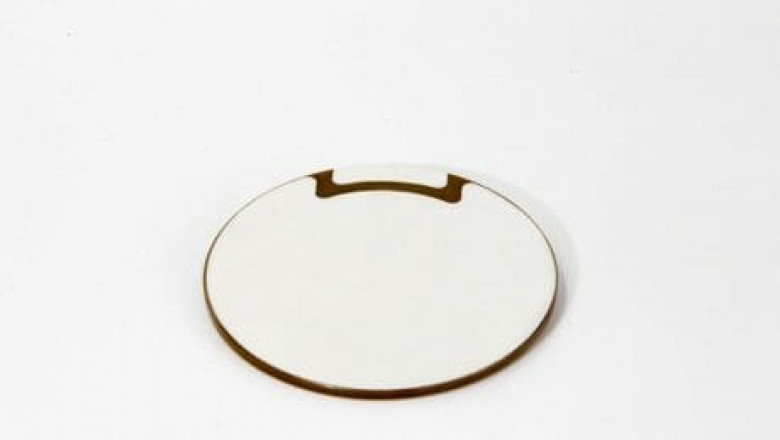views
How PZT Discs Contribute to Sensor Technology
In the world of modern sensor technology, materials with unique properties are at the core of significant advancements. One such material is the PZT disc, a piezoelectric material that has revolutionized how sensors work in numerous industries.
From medical devices to industrial applications, the ability of PZT discs to convert mechanical energy into electrical energy, and vice versa, makes them indispensable in the development of high- performance sensors. But how exactly do PZT discs contribute to sensor technology?
What is a PZT Disc?
Before diving into their contribution, it’s important to understand what a PZT disc is. PZT stands for Lead Zirconate Titanate, a ceramic material known for its piezoelectric properties. Piezoelectric materials generate an electric charge when subjected to mechanical stress, or conversely, they can change shape when an electrical field is applied to them.
PZT discs are small, flat, circular components made from this material. These discs are often used as sensors or actuators in a variety of applications due to their ability to convert mechanical forces (such as pressure, vibration, or acceleration) into electrical signals, or the reverse process.
The Role of PZT Discs in Sensors
PZT discs are widely used in sensors due to their high sensitivity and reliability. Their primary contribution to sensor technology lies in their piezoelectric properties, which allow them to detect and measure changes in their environment with high precision. Here’s how they contribute:
1. Pressure Sensing:
PZT discs are excellent for measuring pressure changes. When pressure is applied to the PZT material, it deforms slightly, generating an electric charge proportional to the applied force. This is the basis for pressure sensors used in various industries, including automotive, aerospace, and medical devices.
For example, in the automotive industry, PZT-based sensors can monitor tire pressure, ensuring that vehicles operate safely. In medical devices, PZT pressure sensors are used in heart rate monitoring and blood pressure measurement devices.
2. Vibration Sensing:
Another key application of PZT discs is in vibration sensing. Due to their ability to detect mechanical vibrations and convert them into electrical signals, PZT discs are often used in systems that monitor machinery for wear and tear. In industrial environments, sensors using PZT discs can detect abnormal vibrations in equipment, such as pumps, motors, and turbines, providing early warning signs for maintenance and preventing costly breakdowns.
3. Accelerometer Technology:
Accelerometers are devices used to measure the acceleration forces acting on an object, and PZT discs play a vital role in these sensors. By measuring the displacement of the PZT material when subjected to accelerative forces, accelerometers with PZT discs can accurately determine the magnitude and direction of acceleration.
This application is crucial in fields like consumer electronics (e.g., smartphone screens adjusting based on orientation), automotive safety (e.g., airbags triggering in the event of a crash), and aerospace (e.g., measuring G-forces during takeoff and landing).
Benefits of PZT Discs in Sensor Technology
The use of PZT discs in sensor technology offers several key benefits that make them ideal for a variety of applications:
.High Sensitivity: PZT discs can detect even the smallest mechanical changes, making them highly sensitive and accurate. This is essential for applications where precision is crucial, such as in medical diagnostics or in the monitoring of sensitive machinery.
.Compact and Durable: PZT discs are small, durable, and can function in extreme conditions,making them ideal for use in sensors in challenging environments. Their compact size allows them to be integrated into a variety of devices without taking up much space.
.Wide Range of Applications: From medical devices to industrial sensors, PZT discs are versatile and can be tailored to meet the needs of specific industries. Their ability to function across different sensing modalities—pressure, vibration, temperature, and acceleration—makes them indispensable in modern sensor technology.
.Low Power Consumption: Since PZT sensors do not require a constant power supply to operate, they are energy-efficient and can be used in battery-operated devices, such as wireless sensors in remote areas.
Conclusion
PZT discs are vital components in the development and advancement of sensor technology. Their unique piezoelectric properties allow them to sense pressure, vibrations, acceleration, and even temperature changes, making them indispensable in a wide range of applications. From automotive safety systems to medical devices, PZT discs continue to improve the functionality, precision, and efficiency of sensors across various industries. As sensor technology evolves, the role of PZT discs will likely expand, further driving innovation in fields that rely on accurate, real-time data collection and analysis.






















Comments
0 comment